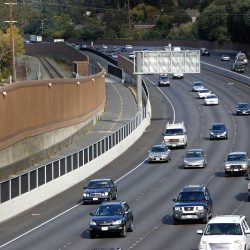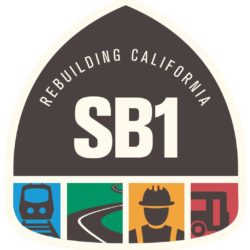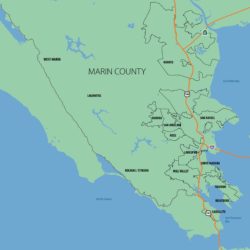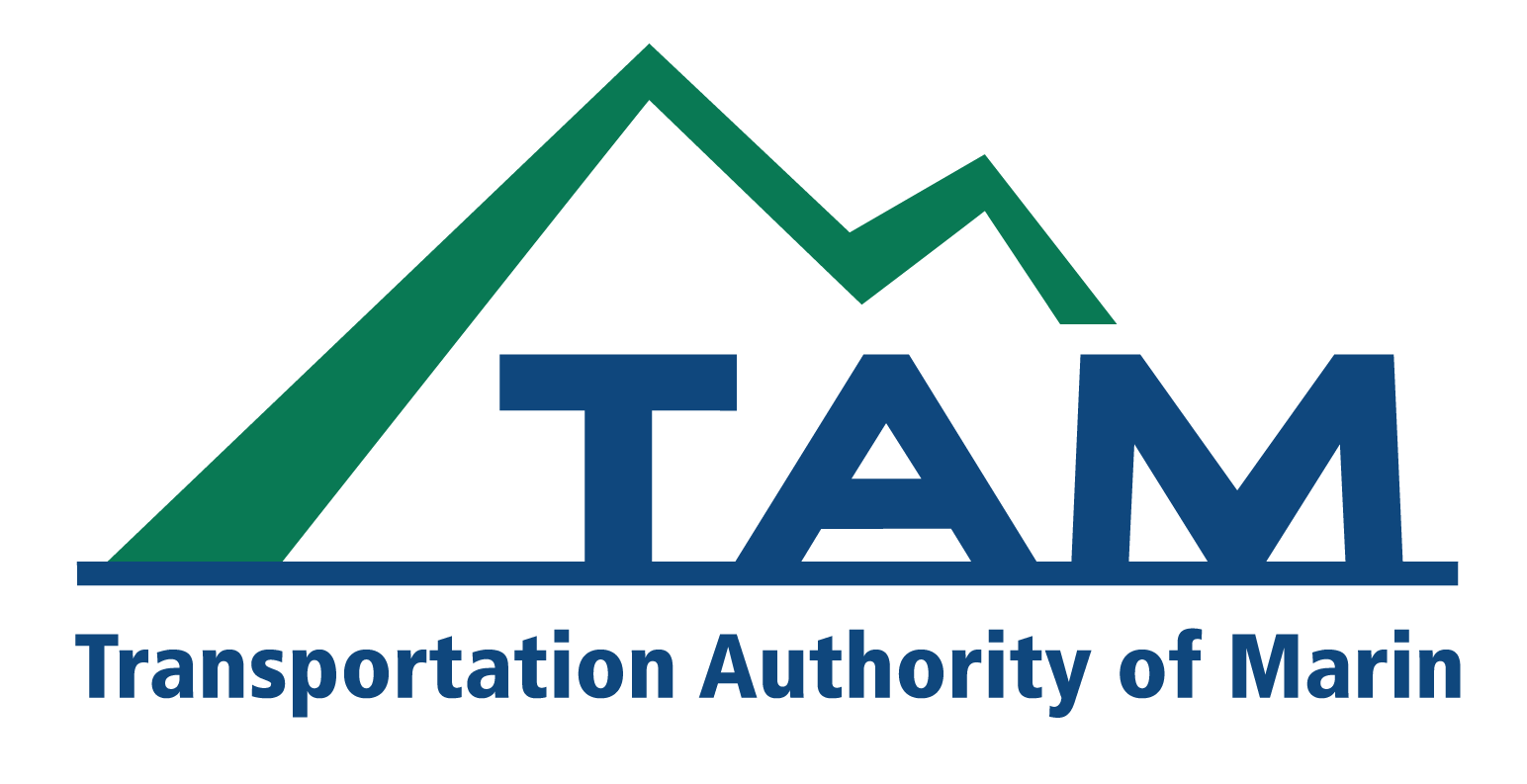
Although funds raised locally via Measure A and Measure B provide the lion’s share of Marin County’s transportation funding (approximately 70%), TAM also receives some regional, state and federal transportation funding, which is primarily raised through sales taxes, fuel taxes and other fees.
It is important to note that our local funds are a very important factor in making Marin County more competitive when applying for other sources of funding at the regional, state and federal levels.
One Bay Area Grant (OBAG)
The One Bay Area Grant (OBAG) program was created by MTC to establish policies and programming of federal surface transportation funds. OBAG was devised with the intent to integrate the federal surface transportation program with the region’s land-use and housing policies to provide supportive transportation investments.
The Metropolitan Transportation Commission (MTC) distributes a portion of OBAG funds to county Congestion Management Agencies, or CMAs, in each of the nine Bay Area counties. TAM is the CMA in Marin County and is responsible for soliciting, evaluating and selecting eligible projects within our county. A portion of these funds are required to be dedicated to locally elected areas that support OBAG goals, including Priority Conservation Areas (PCAs) and Priority Development Areas (PDAs).
Priority Conservation Areas
Priority Conservation Areas (PCAs) are locations designated for the protection of natural habitats and the preservation of open space for future generations. This includes open spaces that provide agricultural, natural resource, scenic, recreational, and/or ecological values and ecosystem functions. These areas are identified through consensus by local jurisdictions and park/open space districts as lands in need of protection due to pressure from urban development or other factors. PCAs are categorized by four designations: Natural Landscapes, Agricultural Lands, Urban Greening and Regional Recreation.
PCAs are a component of Plan Bay Area, the integrated long-range transportation and land-use/housing plan for the San Francisco Bay Area. Projects located within these areas are eligible for funding through the OBAG program.
Priority Development Areas
Priority Development Areas (PDAs) are areas within existing communities that local cities or counties have identified and approved for future growth. These areas typically are accessible by one or more transit services and are located near jobs, shopping and other services.
Regional Measure 2 Bridge Tolls
Voters in 2004 approved Regional Measure 2, raising the toll on the region’s seven state-owned toll bridges by $1. Referred to as RM2, the measure established a Regional Traffic Relief Plan to help finance highway, transit, bicycle and pedestrian projects in the bridge corridors and their approaches, and to provide operating funds for key transit services.
Lifeline Program Funds
The Lifeline Transportation Program supports projects that address mobility and accessibility needs in low-income communities throughout the region. It is funded by a combination of federal and state operating and capital funding sources. As a grant-based program, the Metropolitan Transportation Commission (MTC) provides funding and guidance to local congestion management agencies in distributing funding. TAM administers the Lifeline Transportation Program within Marin County, prioritizing projects identified within Community-Based Transportation Plans
Transportation Fund for Clean Air
The Transportation Fund for Clean Air (TFCA) revenues are collected from a $4 surcharge fee on vehicles registered in the Bay Area, generating about $22 million each year, to fund projects that reduce motor vehicle emissions within the Bay Area Air Quality Management District (BAAQMD). Sixty percent (60%) of TFCA funds are awarded by the Air District to eligible projects and programs through a program referred to as the TFCA Regional Fund. The remaining 40% of these revenues are distributed to the designated County Program Manager Fund in each of the nine counties within the Air District’s jurisdiction for similar emissions reduction projects. TAM serves as the county program manager for Marin County.

Senate Bill 1 (SB1) – The Roadway Repair and Accountability Act of 2017 was signed in to law on April 28, 2017 by Governor Brown. SB1 invests $5.2 billion annually over the next decade to fix California’s transportation system, and does not sunset. $26 billion will go to local roads (including Marin County), and $26 billion will go towards the state highway system.
Learn more about SB 1 in a Caltrans District 4 December 11, 2017 presentation, including the types of projects that could be funded through SB1 in Marin County.
Read the factsheet about Marin Transportation Projects Funded by SB 1
Read the factsheet about Bay Area Improvement Projects
Visit the SB1 website for detailed information.
Read the factsheet about State Transportation Funding Myths vs. Facts

Regional Measure 3 (or RM 3) was passed by 55% of Bay Area voters in June 2018 authorizing incremental increases to Bay Area bridge tolls to fund significant transportation improvements and help solve some of the Bay Area’s growing congestion problems. The measure is expected to generate up to $4.45 billion dollars to fund major transportation project in the toll bridge corridors.
There are several critical projects in Marin County that will receive funding from the Measure including:
- The Downtown San Rafael Bettini Transit Center Permanent Relocation – $30 million
- NB Highway 101 to EB I-580 Direct Connector Project – $135 million ($210 million for overall Richmond San Rafael Bridge Improvements)
- Marin-Sonoma Narrows – $120 million
- State Route 37 Improvements – $100 million for Environmental Document (four counties of Marin, Sonoma, Napa, and Solano)
- San Francisco Bay Trail Improvements / Safe Routes to Transit – $150 million
- SMART Extension to Windsor and Healdsburg – $40 million
- North Bay Transit Access Improvements – $100 million
The toll will increase over time in the amount of $1 in 2019, an additional $1 in 2022 and an additional $1 in 2025. Passage of the measure required a simple majority and received 55% approval. Projects funded by the toll revenue must show a nexus – a benefit – to the toll bridge users who pay the fee.
The bridge toll increase would apply to the region’s seven state-owned bridges: the Antioch, Bay, Benicia, Carquinez, Dumbarton, Richmond-San Rafael, and San Mateo bridges. Cars passing over two bridges using Fastrak in the same day would receive a 50% discount on the second bridge.
Read the TAM RM 3 Fact Sheet highlighting Marin County projects
View the list of projects.
View the map of projects.
State Funding
The State of California provides a variety of transportation dollars to Marin County, including funding from state gas taxes directly to our cities and towns and the County. In addition to these formula funds, competitive grant programs distribute additional funding through a variety of state programs, including the Active Transportation Program (ATP). Highway funds are primarily provided through the STIP program.
ATP
The Active Transportation Program (ATP) was created by the State to encourage increased use of active modes of transportation, such as biking and walking by consolidating various transportation programs, including the federal Transportation Alternatives Program (TAP), state Bicycle Transportation Account (BTA), and federal and state Safe Routes to School (SRTS) programs.
ATP funds are primarily distributed to two programs: the State Program and the Regional Program. The State Program is administered by the California Transportation Commission (CTC) and the Regional Program is administered in the Bay Area by the Metropolitan Transportation Commission (MTC).
ATP funds provide a total of about $120 million each year for bike and pedestrian projects across California. The program allows cities, counties, transit agencies and other public agencies to compete for grants to build bicycle/pedestrian paths, install bike racks, and other projects or programs that make walking or biking easier, safer and more convenient.
STIP
The State Transportation Improvement Program (STIP) is a multi-year capital improvement program of transportation projects on and off the State Highway System, funded with revenues from the State Highway Account and other funding sources. The STIP is composed of two sub-elements: 75% of the STIP funds go toward the Regional Transportation Improvement Program (RTIP) and 25% go to the Interregional Transportation Improvement Program (ITIP).
TAM adopts and forwards a program of RTIP projects to the Metropolitan Transportation Commission (MTC) for each STIP cycle. As the Regional Transportation Planning Agency for the nine-county Bay Area, MTC is responsible for developing the regional priorities for the RTIP. MTC approves the region’s RTIP and submits it to the California Transportation Commission for inclusion in the STIP. The California Department of Transportation is responsible for developing the ITIP
